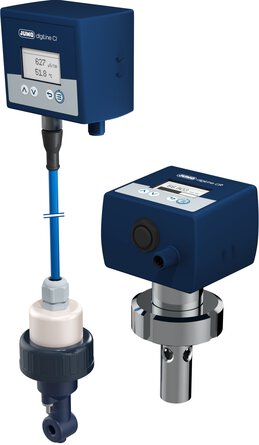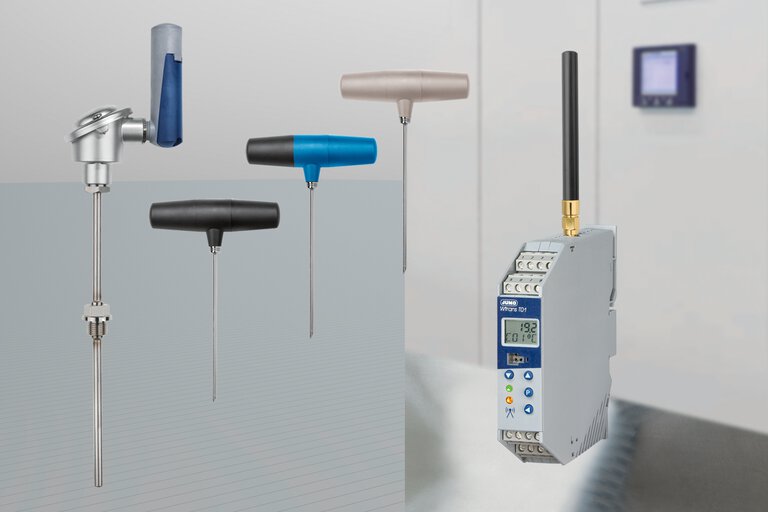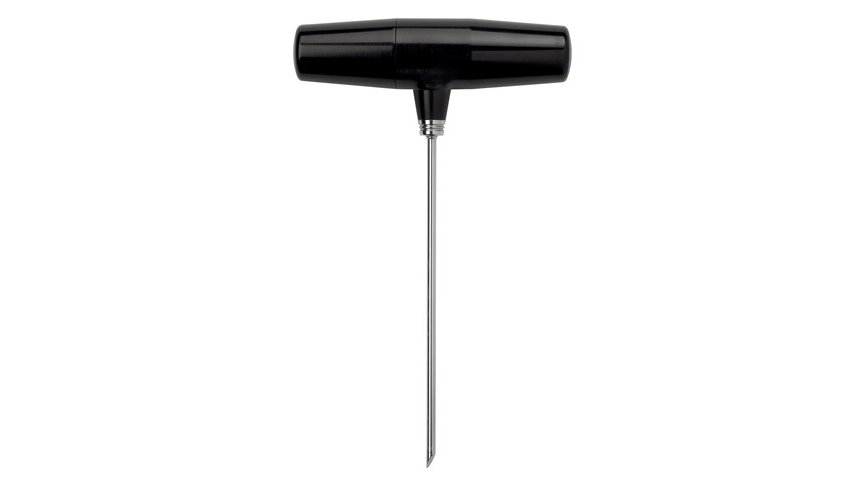Which types of wireless temperature sensors are available?
We have the JUMO Wtrans T serie which are RTD temperature probes with wireless data transmission. The T01 measures temperature up to 85°C, the T02 measures temperature up to 125°C and the T03 Ex has the ATEX approval for usage in potentially explosive areas and measures temperature up to 85°. This serie is particulary useful in a number of processes in the food and pharmaceutical industy. Think of temperature measuring in ventilated or closed tanks, cooking or smoking chambers and spray towers. The serie is FDA and EHEDG compliant especially in combination with the PEKA process connection adapter system.
We have the JUMO Wtrans B which is a programmable head transmitter with wireless data transmission. This transmitter especially designed for mounting in form B connection heads (such as the JUMO thermocouple 901020 or the JUMO RTD temperature probe 902020). Because of this design we can connect a wide range of temperature sensors such as: our Pt100, Pt500 or Pt1000 RTD temperature probes (with two-, three- and four-wire circuits) or our thermocouples type B, J, K, L, S and N.
We have the JUMO Wtrans E01 which is a universal wireless measuring probe to measure environment temperature, humidity and CO2. You can connect a single temperature sensor which is a RTD temperature probe Pt1000 and measures temperature from -50 to +150 °C or you can connect a combined humidity/temperature sensor which can measure temperature from -40 to +80 °C and relative humidity from 0 to 100%. The separate CO2 sensor works according to the NDIR infrared principle and can measure CO2 from 0 to 2000/5000/10000 ppm. This wireless measuring probe is particulary useful for climate control applications in green houses, storage and climate rooms, stables, hatchers and incubators or building automation.
Al of the mentioned wireless temperature sensors need a receiver to fetch the measured data and distribute it to a controller, automation system, logger or display. The standard implementation is using the JUMO Wtrans Receiver T01, which is an universal receiver for all the mentioned wireless temperature sensors above. There is also the possibility to connect our wireless temperature sensors directly to our automation system JUMO variTRON 300.














